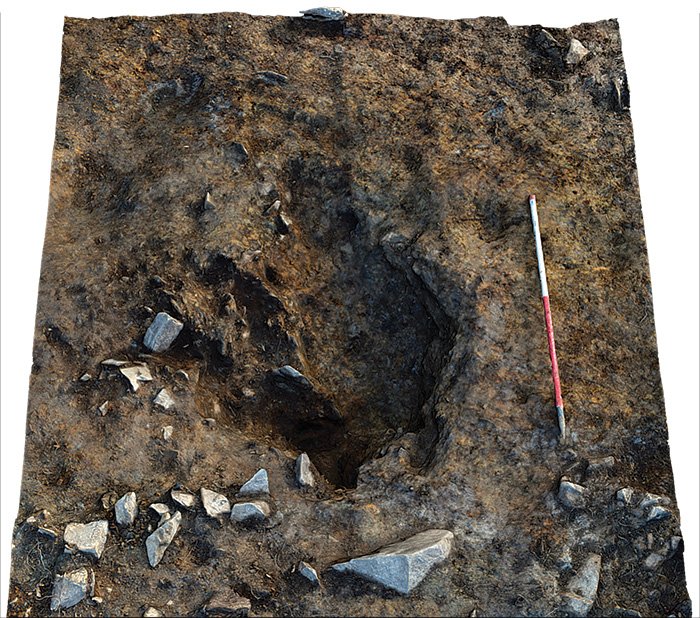
Recent research has potentially identified an intriguing new connection between Stonehenge and a partially dismantled stone circle in south-west Wales – furthering the connection between these two areas during the Neolithic period.
Previous work on the origins of Stonehenge’s smaller stones, known as ‘bluestones’, has provided strong evidence to support the idea that they were quarried in the Mynydd Preseli region of Wales (see CA 313, 345, and 366), and were brought 175 miles to Salisbury Plain, where they were erected in what are known as the Aubrey Holes during the first phase of Stonehenge’s construction (c.3080-2950 BC).
Was there a step in between? Recent investigations at Waun Mawn stone circle in Wales suggests that there might have been. In 2018, excavations at Waun Mawn – led by Professor Mike Parker Pearson of University College London – found six stoneholes with emptied sockets close to the location of the previously identified bluestone quarries. Between the three stones that still stand at the site and these newly identified stoneholes, it is estimated that the original monument would have been 110m in diameter, making it Britain’s third-largest stone circle (after Avebury and Stanton Drew), with the same diameter as the circular ditch that encloses Stonehenge. Waun Mawn’s layout also indicates that it would have aligned on the midsummer solstice sunrise, like Stonehenge.
These are not the only potential links: the project also revealed that one of the empty holes at Waun Mawn had a pentagonal base, very similar in size and shape to Stone 62 at Stonehenge. Subsequent analysis of stone flakes recovered from the bottom of this stonehole suggests that its former occupant was made of unspotted dolerite, very likely quarried from the same location as Stone 62 and the other two unspotted dolerites that have been identified at Stonehenge.
Dating evidence provides the final possible connection. OSL and radiocarbon dating places the construction of the Waun Mawn circle in c.3400-3200 BC, making it one of the earliest stone circles in Britain. This would mean that its stones could have been sourced from the bluestone quarries and erected at Waun Mawn, before being deconstructed and moved to Stonehenge. Such a link would add to our understanding of the Preseli region as an important place during the Neolithic period; it is already known to be home to a concentration of dolmen monuments and large enclosures of this date, but evidence for activity in the 1,000 years after 3000 BC is much more scarce.
‘It’s as if they just vanished. Maybe most of the people migrated, taking their stones – their ancestral identities – with them,’ says Mike Parker Pearson. Intriguingly, recent isotopic analysis of human remains that were buried at Stonehenge when the bluestones are thought to have arrived reveals that 15% of them came from western Britain, very possibly west Wales (see CA 344).
Taken together, this evidence suggests that at least some of the stones used at Waun Mawn may have been reused at Stonehenge. But as Waun Mawn is unlikely to have contained 56 stones (the number of Aubrey Holes at Stonehenge), and many of the bluestones that survive on Salisbury Plain today are made of spotted dolerite rather than Waun Mawn’s unspotted variety, it is possible that stones from other circles were also relocated to Wiltshire as part of the project.
The results of this research were recently published in Antiquity: https://doi.org/10.15184/aqy.2020.239.
This news article appears in issue 373 of Current Archaeology. To find out more about subscribing to the magazine, click here.
